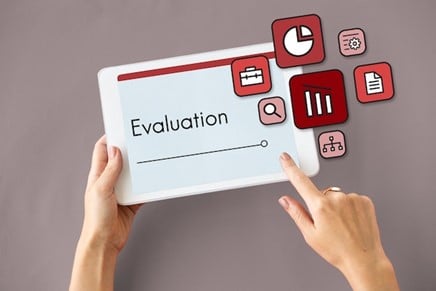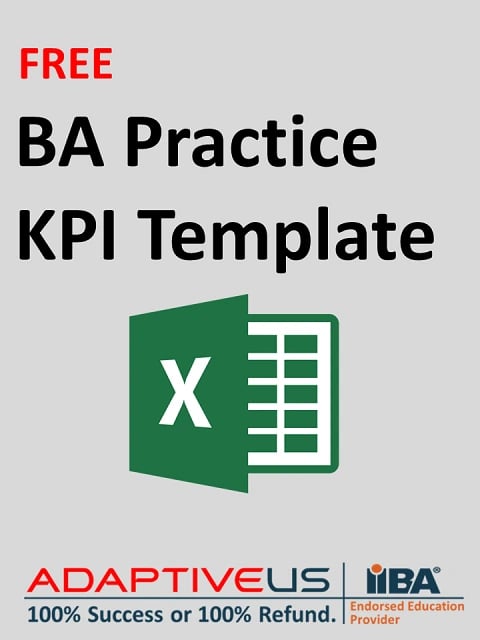Business Analysts KPIs For 2024 | Free KPI Template
"If you don't measure it, you can't improve it."
This is what the iconic management guru Peter Drucker has said about the criticality of measurements.
Business analysts are key agents of positive business changes. It is important for businesses to assess their business analysis performance and improve it over a period to take the organization to greater success. To define measures for business analysis and business analysts, it is important to understand key result areas for business analysts. This was a topic of interest for the entire business analysts' community as well as management; hence I wanted to hear from the BA community rather than putting down my thoughts.
Here is the link to the post based on which this article has been written – https://lnkd.in/g-e4FVsB
Please scroll down to Download BA Practice KPI Template
Key Result Areas for Business Analysts

Image source – Freepik.com
Business analysts are responsible for
- Driving business growth
- Bringing positive change in the organization
- Leveraging technology for automation and staying ahead in the game
- Keeping cost and defects in control.
In essence, a large part of the company's growth path and future falls in the BA's bucket of tasks. Therefore, to be effective and to stay on track with their goals, it's critical to measure the performance of the business analysts.
Measuring the Performance of Business Analysts

Image source – Freepik.com
Owing to the criticality of this role and to be effective, business analysts need specific KPIs (Key Performance Indicators) that need to be precise, relevant, and measurable. Important characteristics of BA KPIs are:
- The KPIs should be as clear and unambiguous as possible.
- Selecting the KPI that best suits the environment and is relevant to the context.
- The target of a KPI should be stated clearly to track the work of business analysts.
- The KPI should be measurable and realistic.
The most common KPIs/Metrics used to measure the performance of BAs
Often, we measure a BA's work with the approval or disapproval of the stakeholders. Stakeholders' value/approval and time act as the metric that is generally used to measure the performance of a business analyst. Once the need analysis and stakeholder engagement are done, we return to the client with visual representations, that is, the process map, for approval or confirmation before we proceed further.
However, stakeholders are not the only ones to determine the effectiveness of the BA. Various other factors contribute to the measurement of the performance of a BA. For example, factors like project success, process optimization effectiveness, the number of changes after the UAT, release timeline adherence, benefits, improvement in revenue, and cost-saving are often used to measure the success of a BA's work.
Let us discuss them in detail.
Process Optimization Effectiveness
The effectiveness of the business process optimization initiative can be measured after the new business process approach has been implemented, and the below measurements can give a fair idea of the success of the new solution
- Cycle time reduction achieved
- Revenue improvement achieved
- Cost reduction achieved
- Increase in productivity
- The number of technology/process changes that brought benefits to the organization
- Number of new business ideas or processes that brought benefits to the organization
Project Success Rate
A Business Analyst carries significant responsibility for the project's success. Hence a good way to measure the performance of BAs is linked to the project's success.
The below metrics can measure the success of the project:
- Planned vs. Actual goals / Project /solution objectives fulfilment
- Planned vs. Actual Project Timeline
Stakeholder Management Effectiveness

Stakeholders form the most critical part of a business analyst's job. As business analysts, we use many tools to perform our tasks efficiently and effectively communicate among the various stakeholders and the team. Hence, it's vital to measure the effectiveness of a BA from a stakeholder's point of view.
Elicitation Effectiveness
Business analysts are custodians of enterprise and project requirements. A good number of BA effectiveness measures are linked to elicitation effectiveness. Here are a few:
In predictive (waterfall / linear development approaches)
- Number of iterations of requirements revision
- Number of meetings/workshops held for requirements sign off
- Number of missed requirements/miscommunicated requirements
- Stakeholders' Evaluation of the business analysis process and business analyst's performance on the
- Clarity of communications
- Completeness of Requirements / Analysis
- Engagement level of the BA
- Preparedness of the BA for the requirements workshops
In Adaptive (Agile / iterative development approaches)
- Completion of assigned stories for the iterations
- Stakeholders' Evaluation of the business analysis process and business analyst's performance on the
- Clarity of communications
- Completeness of Requirements / Analysis
- Engagement level of the BA
- Preparedness of the BA for the requirements workshops
Requirements Management Effectiveness
It evaluates the current requirement elicitation process that was followed and its effectiveness since BA is the process owner in this. It also checks whether the BA has managed to prioritize his requirements and the percentage of requirements. This KPI assesses the effectiveness of the BA in eliciting requirements effectively.
The metrics can be
- Number of change requests post UAT
- Number of defects after deployment
- Number of changes due to missed requirements
Behavioral Effectiveness

It checks whether the BA has the right behavioral skills. If the BA
- Has learned from his past and applied the lessons learned.
- Can adapt to the culture of the organization.
- Possesses the required leadership skills for a BA.
Summarizing
KPIs are a crucial tool for tracking development and are more likely to be used if someone is held accountable for monitoring and reporting on them. But the implementation of KPIs in the workplace could present some difficulties. Not everyone may fully comprehend them and their application in their organizations, and not every KPI would be suited for your organization.
Choosing the right KPI for the measurement of the performance of the BAs should be done keeping in mind its influence, effectiveness, strategy, accuracy, and relevancy in the future. Along with these, make sure you've done as much study as possible on key performance indicators to decide which ones are suitable for your sector. Next, choose the KPI targets that will help you better comprehend and achieve your goals, and then integrate them across your department. KPIs should reflect your strategy rather than merely the flavor of the day.
You May Also Like
These Related Stories

Business Analyst Training in 2024 | 100% Success Guarantee

Top 10 BA Challenges and Recommended Solutions



Comments (26)